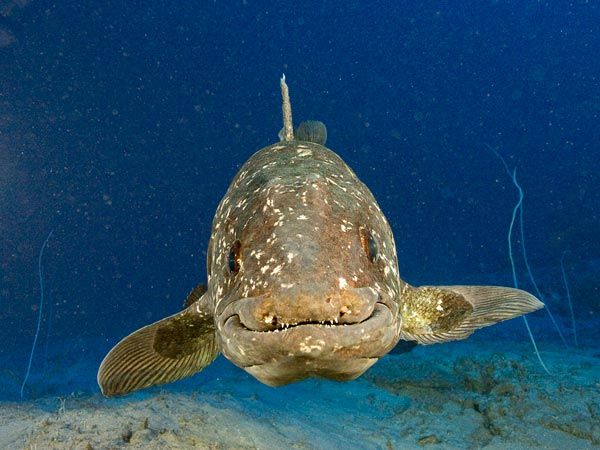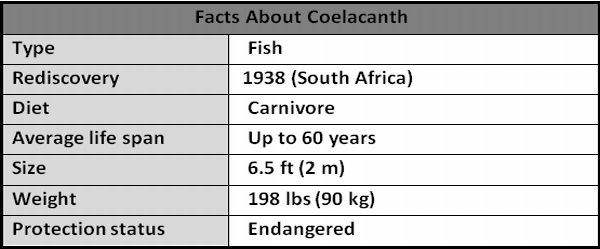
A recent study, led by Hans Fricke, has found out that Coelacanths (pronounced SEE-la-kanth) can live more than hundred years. Coelacanths are one of the worldâs oldest fish species. These fishes, a part of the clad Sarcopterygii family or better known as lobe finned fish, had been rediscovered off the coast of Africa in 1938. They were also found in parts of the western Indian Ocean and in the western Pacific Ocean.
Lack of consistent data led Fricke and his colleagues to study Coelacanths found near Comoros, a group of islands near Seychelles and Madagascar. According to him, a Coelacanth can live up to 103 years. Fricke and his team used submersibles to photograph, videotape to study the Coelacanths as it was difficult to send divers at a depth of 160 to 200 metres. Due to the white markings on Coelacanths, the team was successful in identifying more than 140 individuals during their submersible trips. However, they were unable to find any young Coelacanths among the population of 300 to 400.
The most surprising thing about these fishes is that one can not estimate its age by merely looking at it. This is because of the fact that these fishes do not show the ravages of time. The age of a fish is determined by measuring the growth rings on its scales. However this is not possible with Coelacanths. According to some scientists, Coelacanths went extinct around 65 million years ago with a similar species of prehistoric fishes. It is yet to be found that whether these species were interrelated.
Coelacanths :
There are a number of external and internal features that make Coelacanths distinct from lobe-finned fishes. A Coelacanth has a trilobite fin which is three lobed caudal fin. Its Cosmoid scales act as a protective shell. These fishes also possess a secondary tail that extend past the primary tail separating their upper and lower halves. To talk about its internal features; its heart is like a straight tube which completely differs from the modern fishes.
A Coelacanthâs braincase has only 1.5% brain and the rest is fat. It has a rostral organ within the ethmoid region of its braincase. Its cheeks have a small opercular bone which hold a large soft-tissue opercular flap. This is what makes a Coelacanth one of its kind. The back of its skull has an intracranial joint, which allows it to open its mouth extremely wide. Another feature which makes it unique is its hollow backbone.
Interesting characteristics:
Coelacanths are mystifying fishes that live about 525 to 600 feet below the sea surface. Two species of Coelacanths are found living in Comoros Islands off the east coast of Africa and in the waters off Sulawesi, Indonesia. Its most extraordinary feature is its paired lobe fins. These extend away from its body like legs and move in an alternating pattern, like a trotting horse.
Also, it has a notochord, an oil-filled tube, which serves as a backbone. Coelacanths have an incredible electrosensory rostral organ to identify prey. They have thick scales which are quite common to extinct fishes. The hinged joint in the skull allows a Coelacanth to widen its mouth to hunt a large prey.



